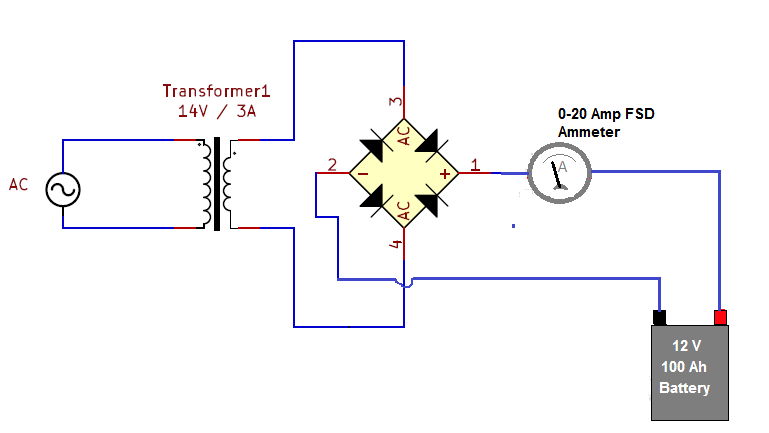The Secret to a Happy Boat Battery: Trickle Charging

Imagine this: a perfect day for boating, the sun is shining, the water is calm, and… your boat won't start. A dead battery can ruin a day on the water faster than a sudden squall. But there's a secret weapon that can keep your boat battery happy and healthy: the trickle charger. It's the unsung hero of boat maintenance, quietly ensuring your battery is always ready to go.
Maintaining a boat battery isn't just about preventing a dead battery on a beautiful day; it's about extending the life of your battery, saving you money in the long run. A properly maintained battery can last significantly longer than one subjected to frequent deep discharges and inconsistent charging. Trickle charging, also known as float charging, plays a crucial role in this preservation process.
So, what exactly is trickle charging? It's a method of charging a battery at a very low current, just enough to offset the battery's natural self-discharge rate. Think of it as a slow drip of energy, constantly topping off the battery and keeping it at its peak performance. This gentle approach avoids overcharging, a common problem with faster charging methods that can damage the battery over time.
The history of trickle charging is intertwined with the development of lead-acid batteries, the most common type used in boats. As these batteries became more prevalent in various applications, including marine use, the need for a safe and effective way to maintain their charge became apparent. Trickle charging emerged as the ideal solution, providing a continuous, low-impact charging method that kept batteries ready for use.
One of the key issues related to boat batteries is their susceptibility to sulfation, a process where lead sulfate crystals form on the battery plates, reducing the battery's capacity and lifespan. Trickle charging helps prevent sulfation by keeping the battery fully charged, minimizing the conditions that lead to crystal formation. This, in turn, extends the battery's overall life and performance.
Three key benefits of trickle charging include extending battery life, preventing sulfation, and ensuring your battery is always ready to go. For example, a sailboat owner who leaves their boat docked for extended periods can use a trickle charger to maintain the battery, ensuring it's ready for their next sail. A fishing boat owner can similarly benefit from a trickle charger to keep electronics and other systems powered up while the boat isn't in use.
Implementing trickle charging is straightforward. First, select a trickle charger appropriate for your battery type and capacity. Connect the charger to the battery terminals, ensuring correct polarity (red to positive, black to negative). Then, plug the charger into a power source. Monitor the charger periodically to ensure it’s functioning correctly.
Advantages and Disadvantages of Trickle Charging
| Advantages | Disadvantages |
|---|---|
| Extends battery life | Requires access to a power source |
| Prevents sulfation | Can be forgotten if not monitored |
| Keeps battery ready for use | Incorrect charger selection can damage the battery |
Five best practices for trickle charging include: selecting the correct charger, monitoring the charger, disconnecting the charger during periods of non-use (if recommended by the manufacturer), ensuring proper ventilation around the battery, and regularly inspecting the battery for signs of damage or wear.
Five real-world examples of trickle charging in action include maintaining batteries on sailboats, fishing boats, personal watercraft, pontoon boats, and boats in storage.
Five challenges and solutions related to trickle charging include overcharging (solution: use a smart charger), incorrect charger selection (solution: consult your battery's specifications), damaged charging cables (solution: replace damaged cables), faulty battery (solution: replace the battery), and power outages (solution: consider a solar-powered trickle charger).
FAQ: What is trickle charging? How does it work? What type of charger do I need? Is it safe? How long can I leave a trickle charger connected? Can I trickle charge any battery? What are the signs of overcharging? What are the alternatives to trickle charging?
Tips and tricks: Use a smart charger for automatic shut-off. Check the battery's water levels (if applicable). Keep the battery terminals clean.
In conclusion, trickle charging is an essential practice for any boat owner. It's a simple, yet effective way to extend the lifespan of your battery, prevent common issues like sulfation, and ensure that your boat is always ready for your next adventure. By understanding the importance of battery maintenance and implementing trickle charging correctly, you can avoid the frustration of a dead battery and enjoy countless hours on the water. Investing in a good quality trickle charger and following the best practices outlined above is a small price to pay for the peace of mind and long-term savings it provides. Don't wait for a dead battery to ruin your day; take proactive steps to keep your boat's heart beating strong with the power of trickle charging.
Extreme engineering boat trailers mastering the art of heavy duty hauling
Decoding the honda bolt pattern your guide to wheel fitment
The subtle nuances of the jeep jt bolt pattern













